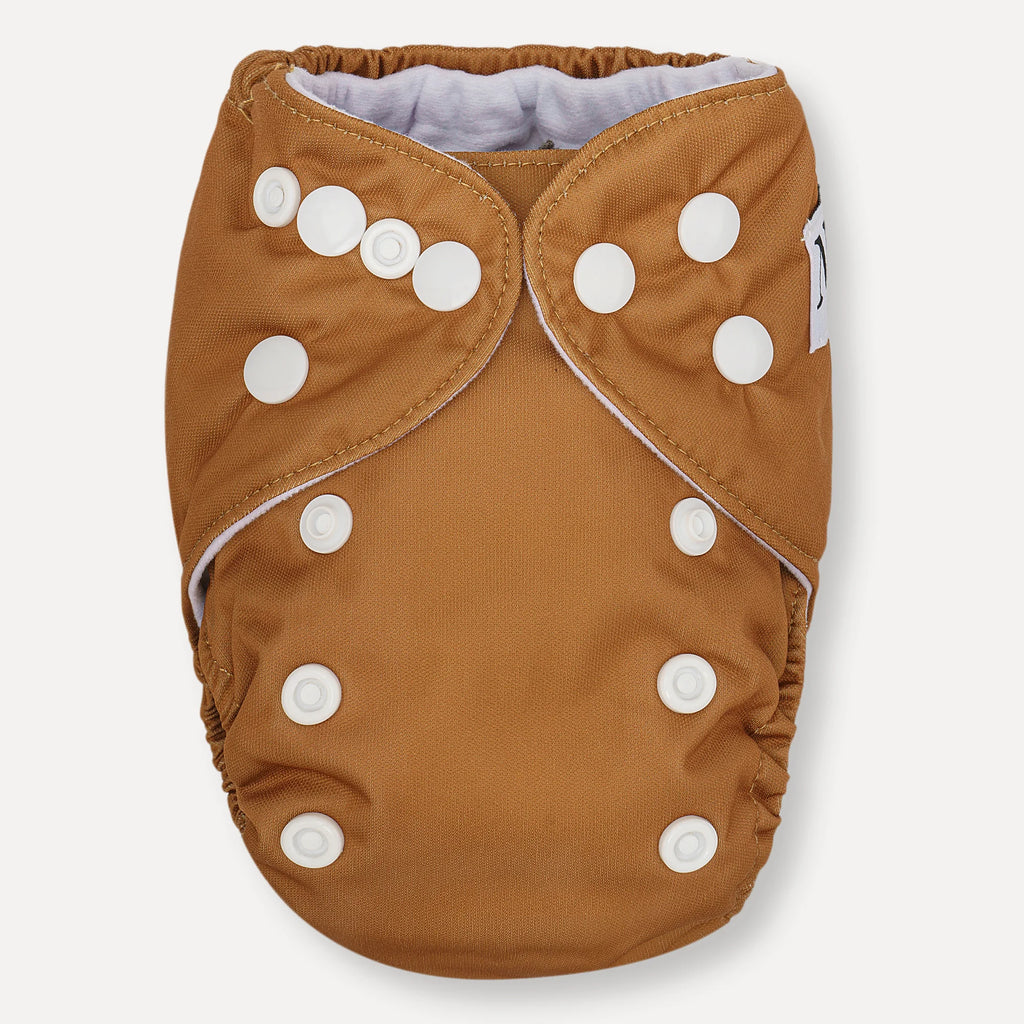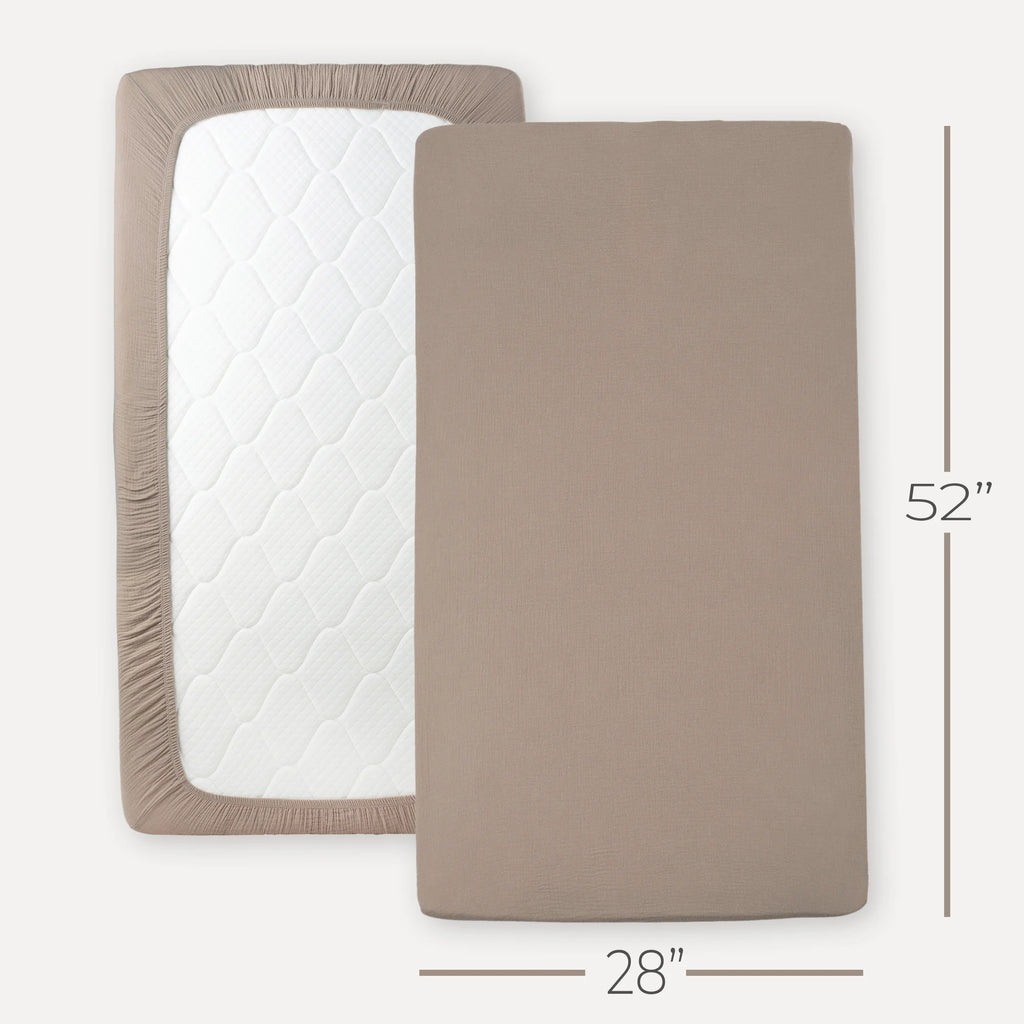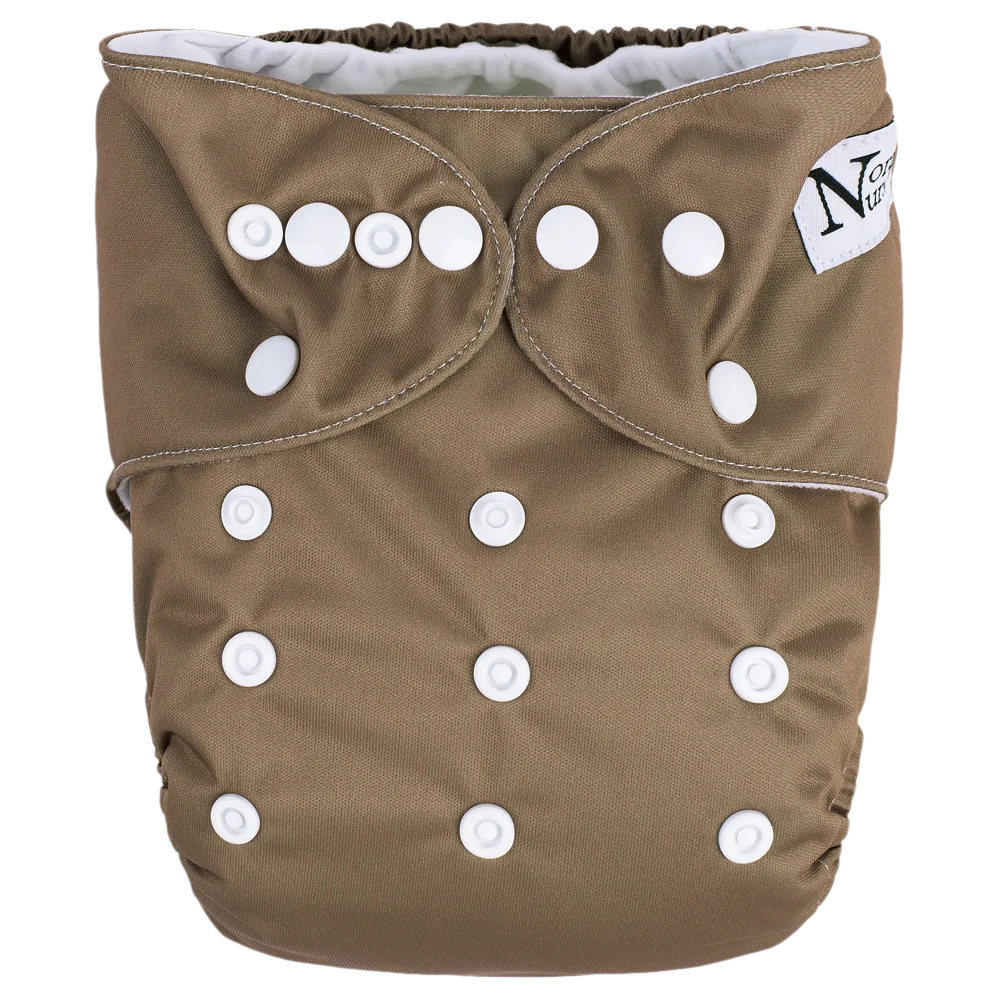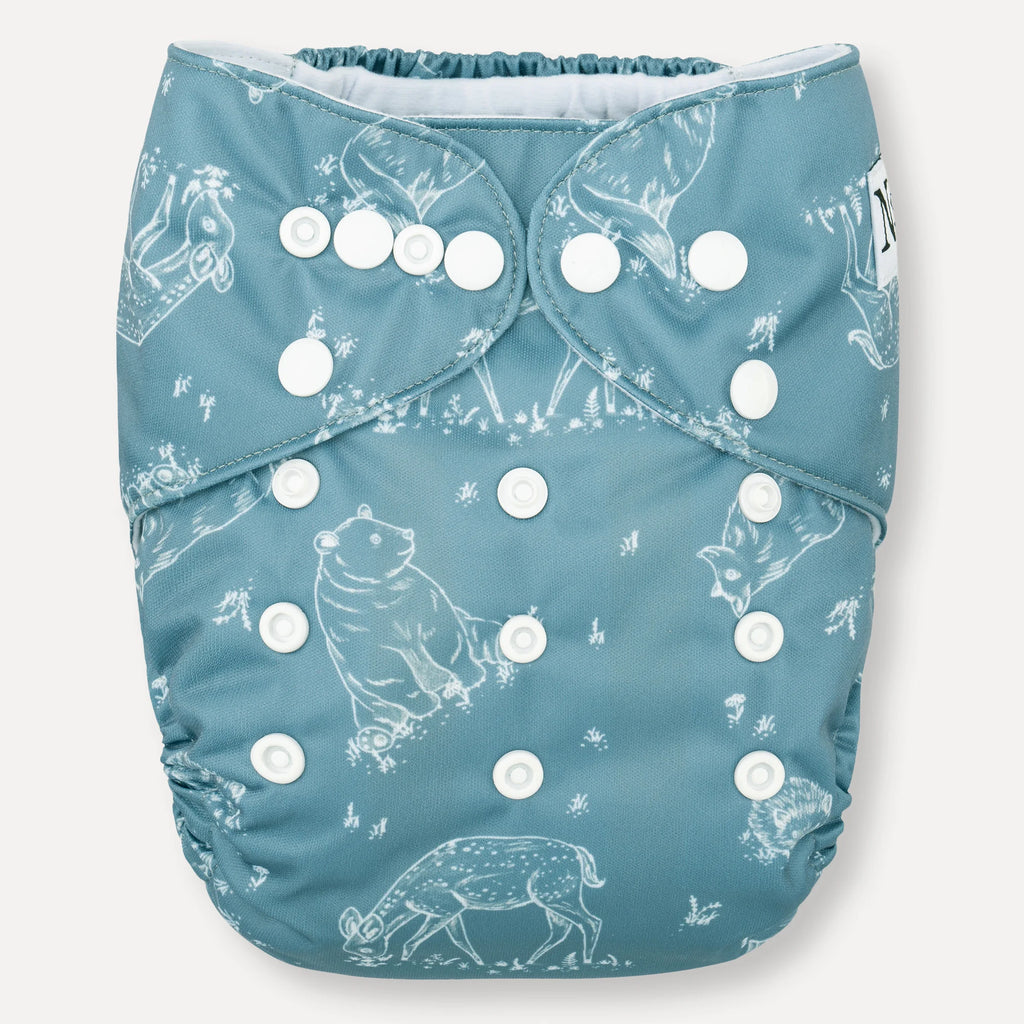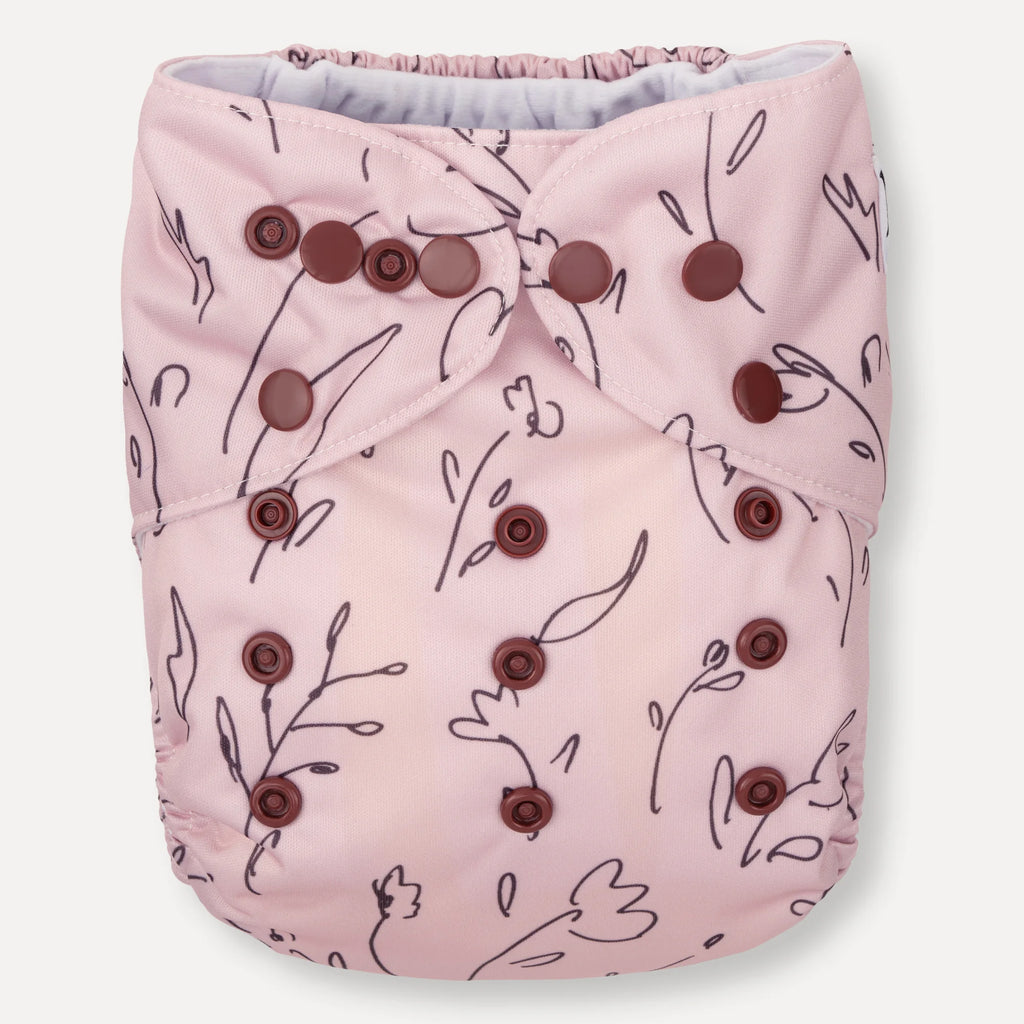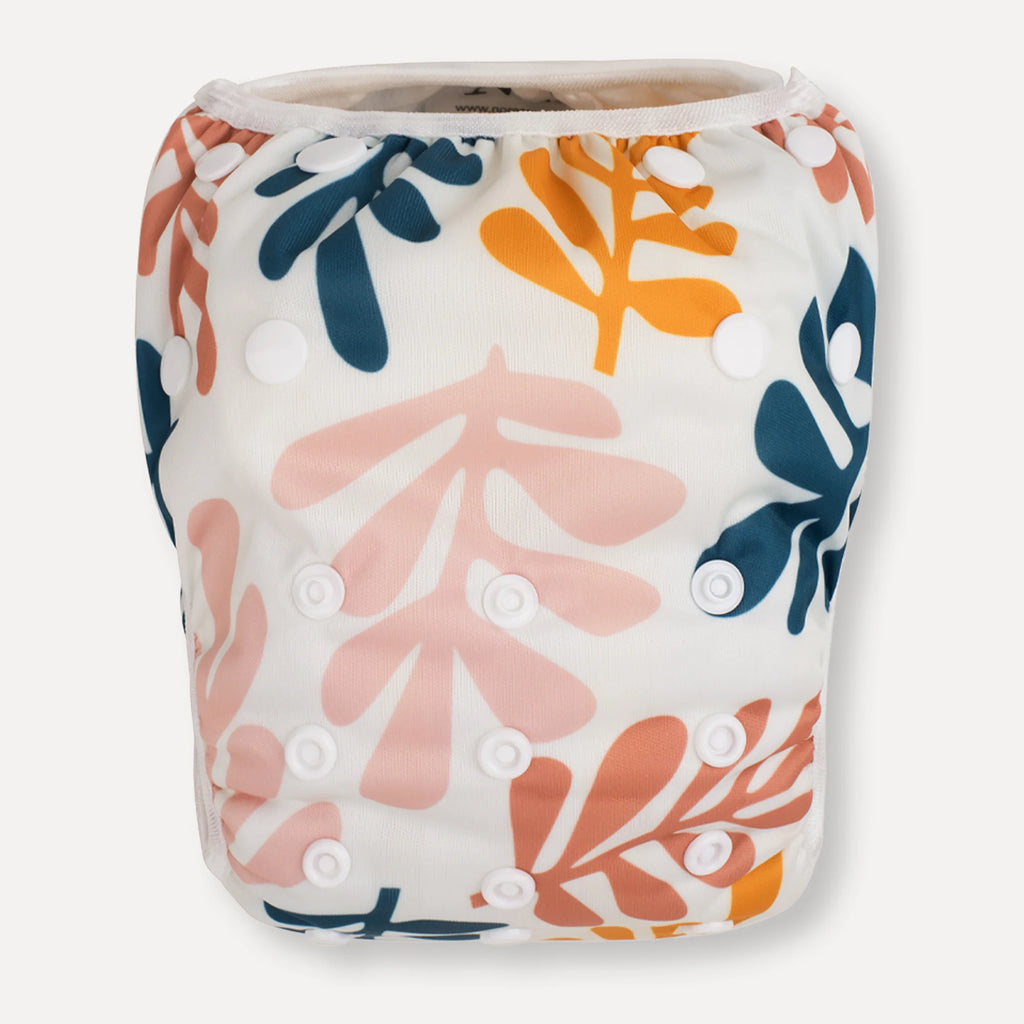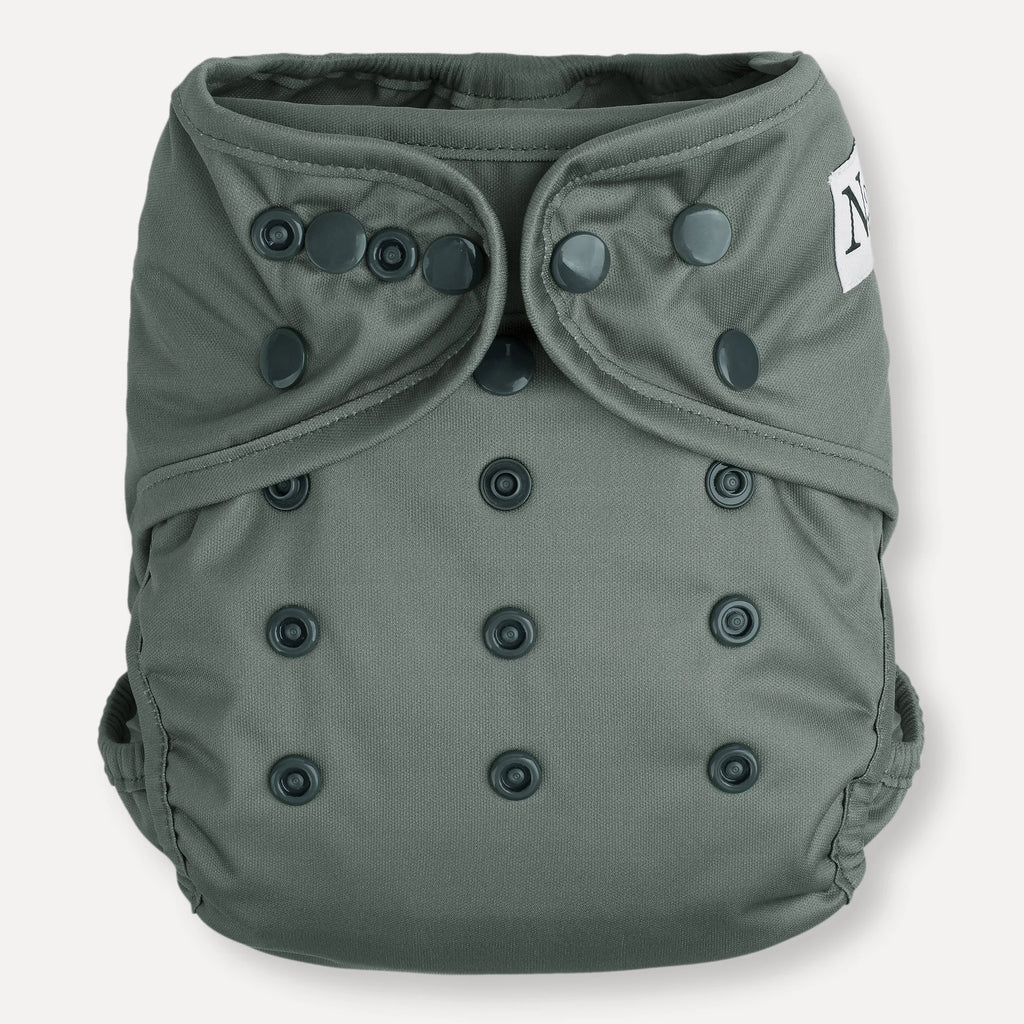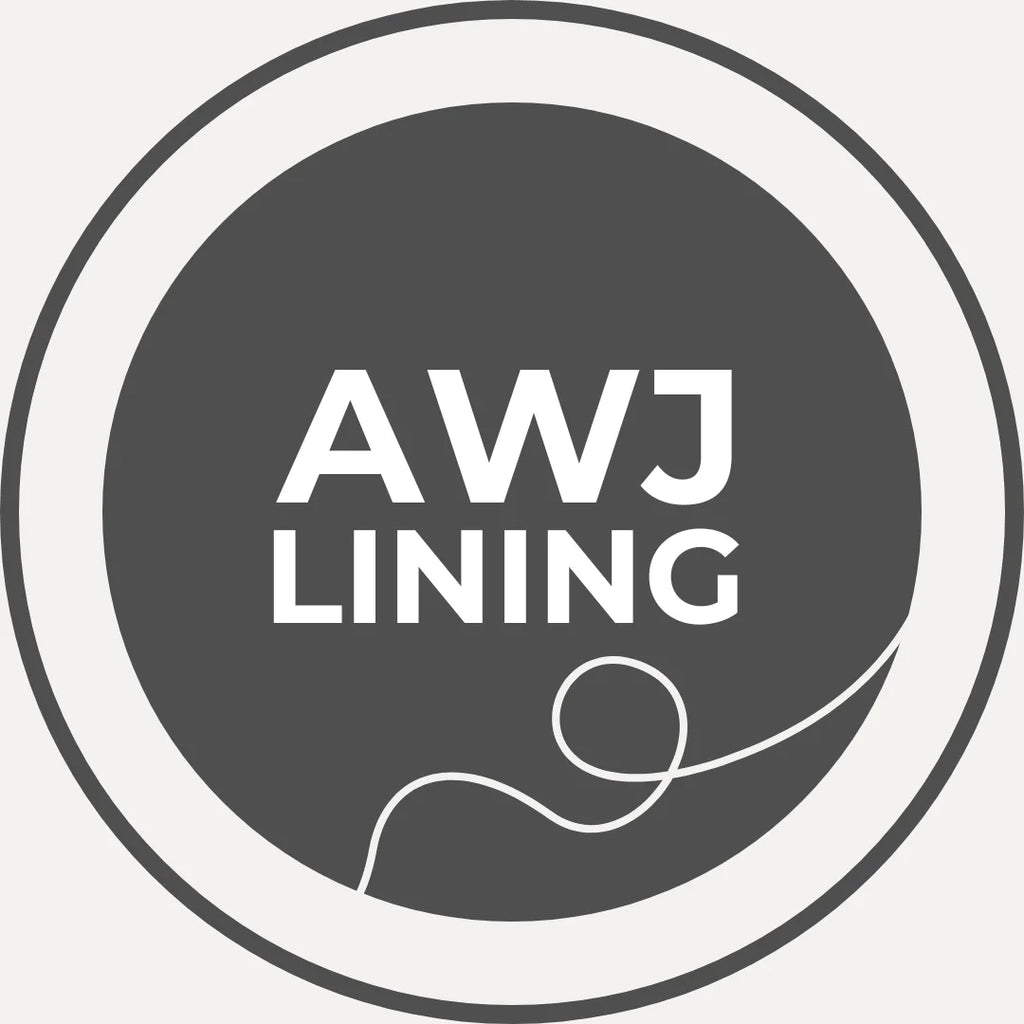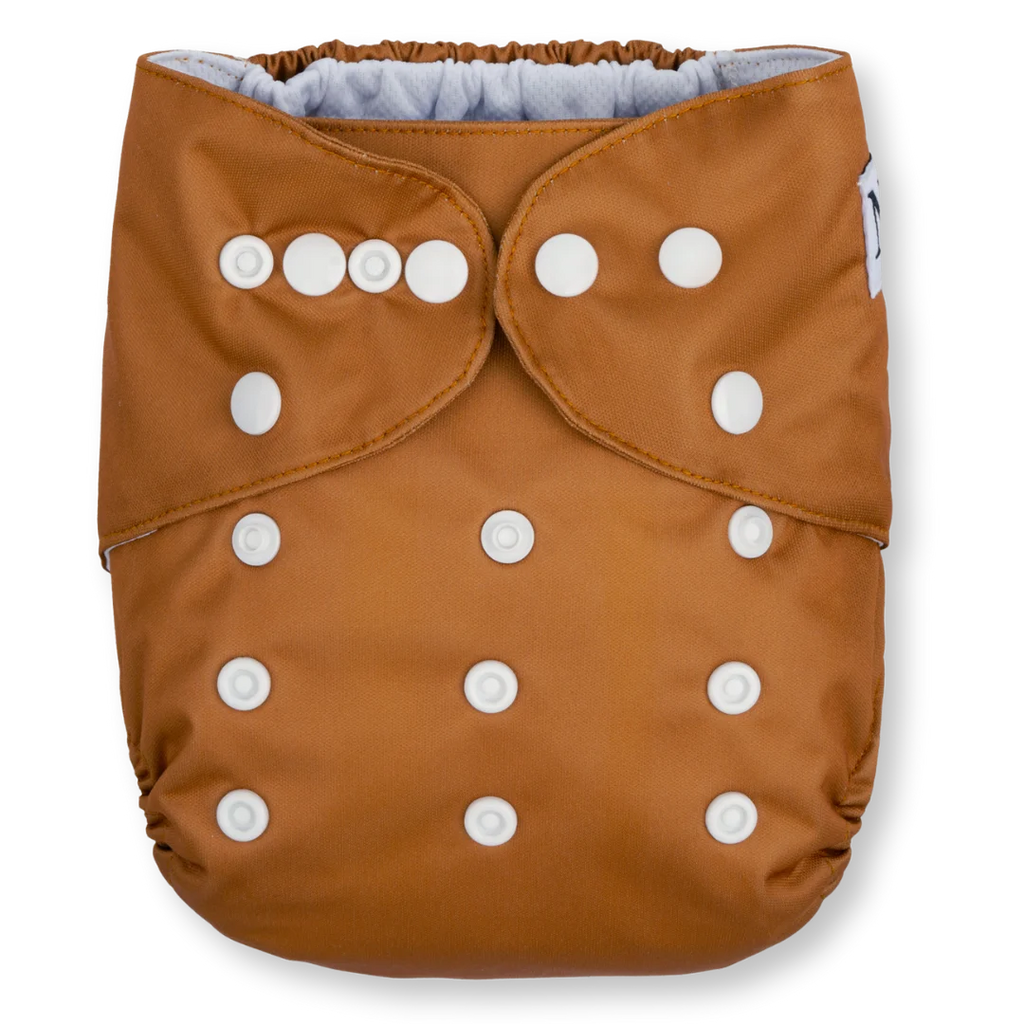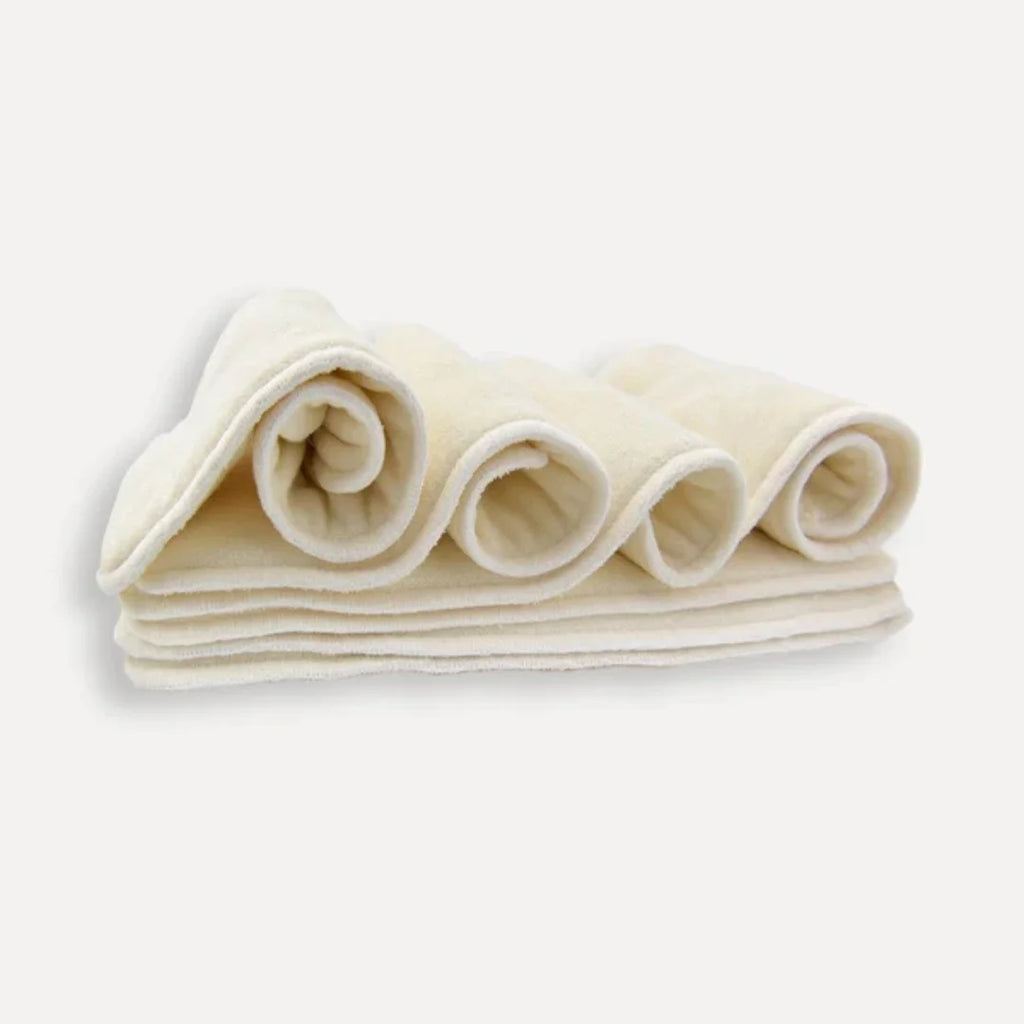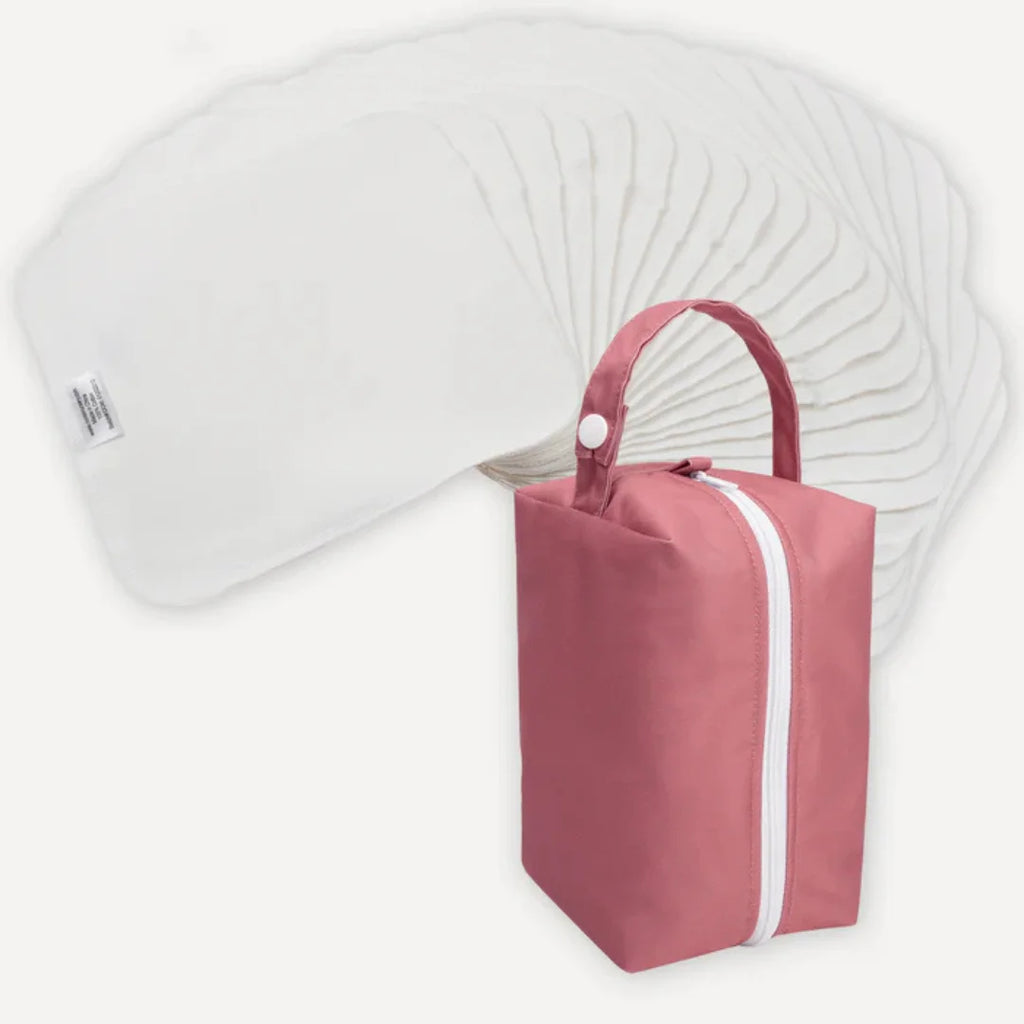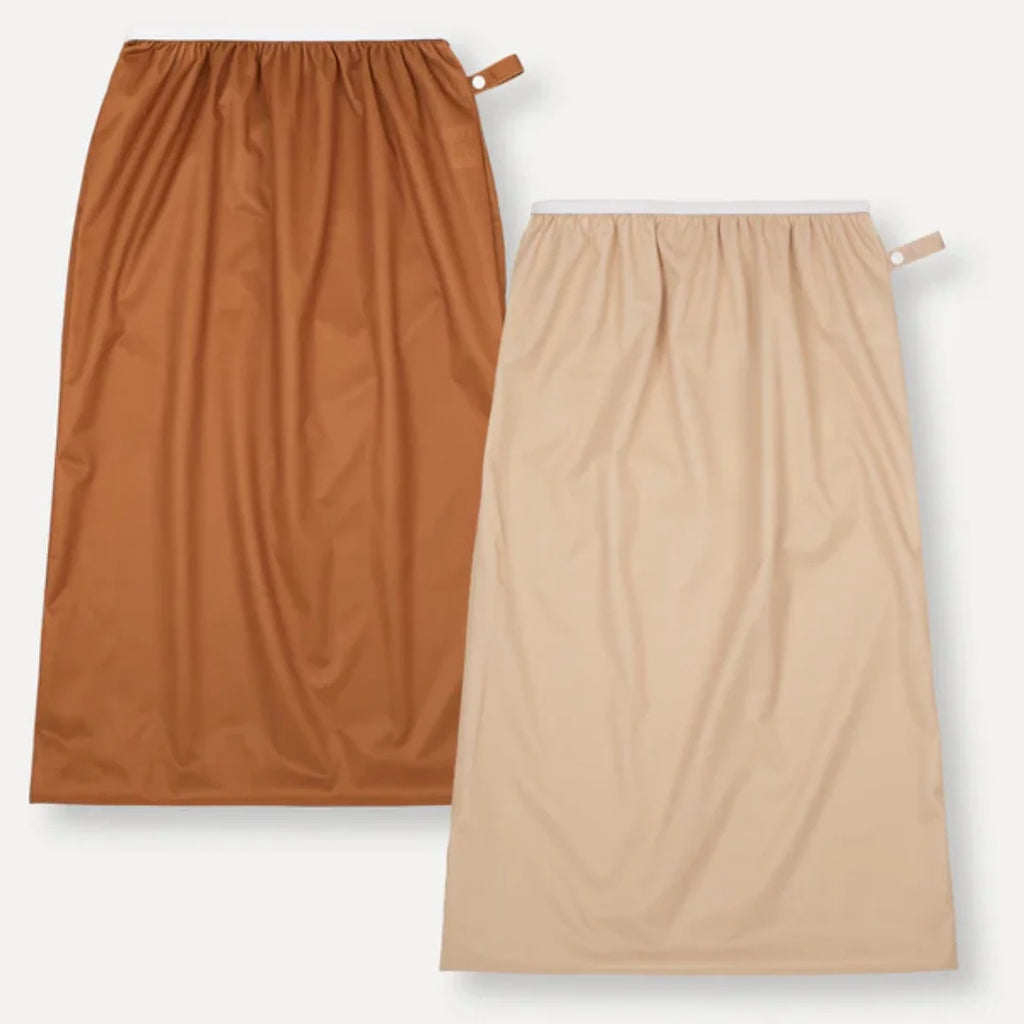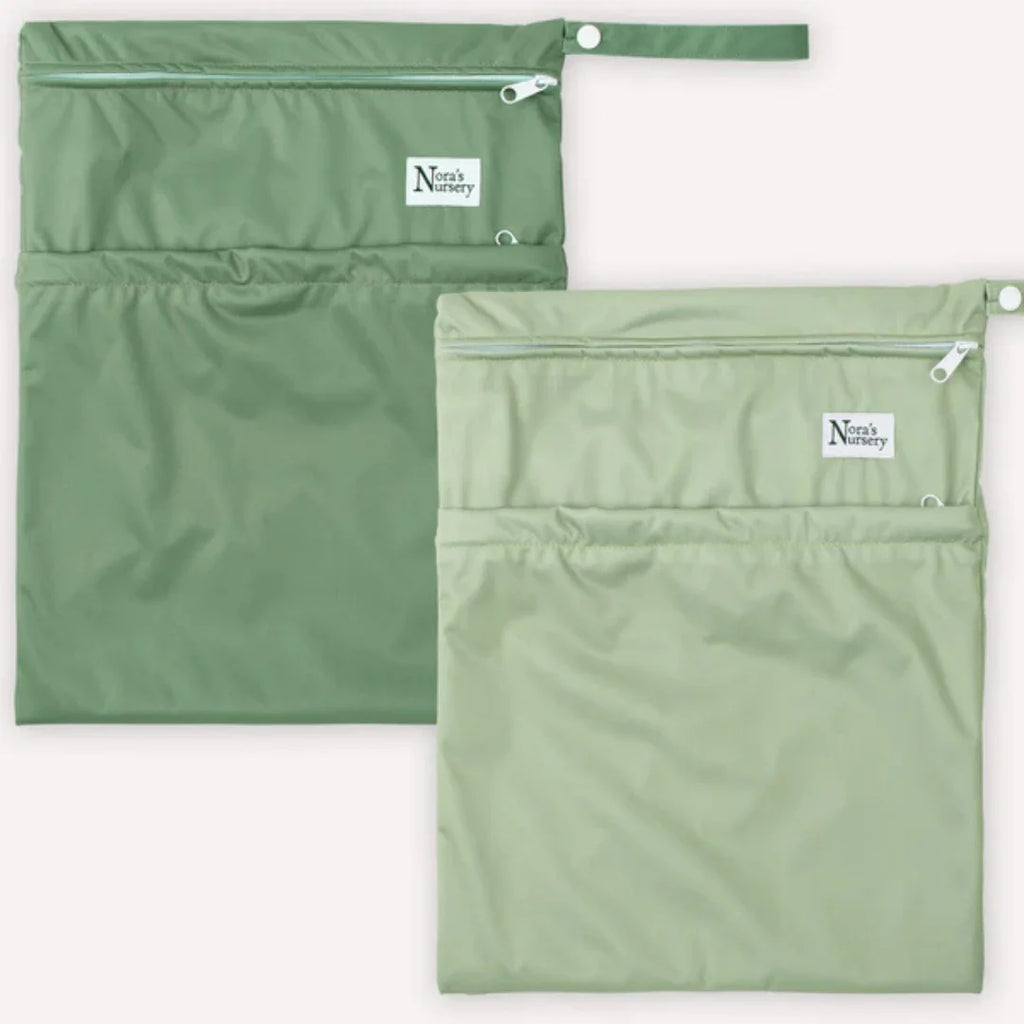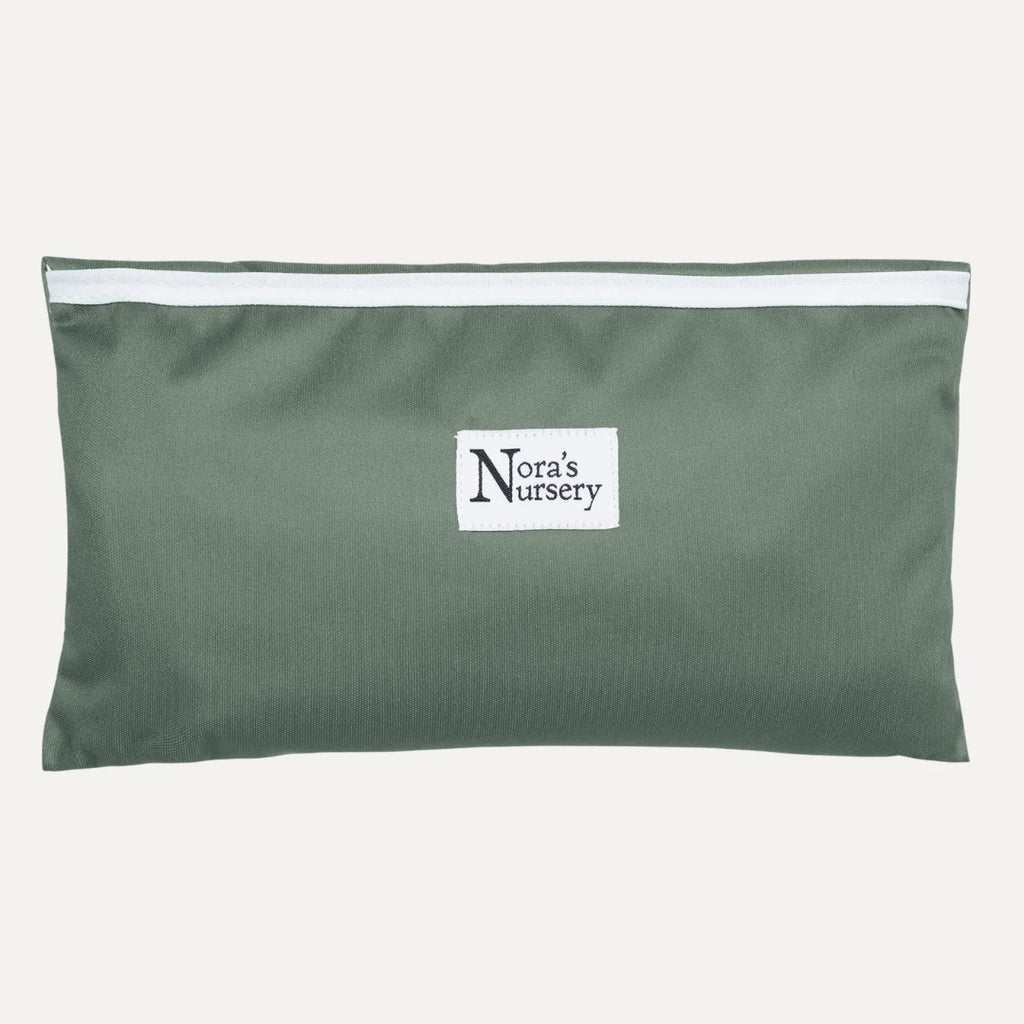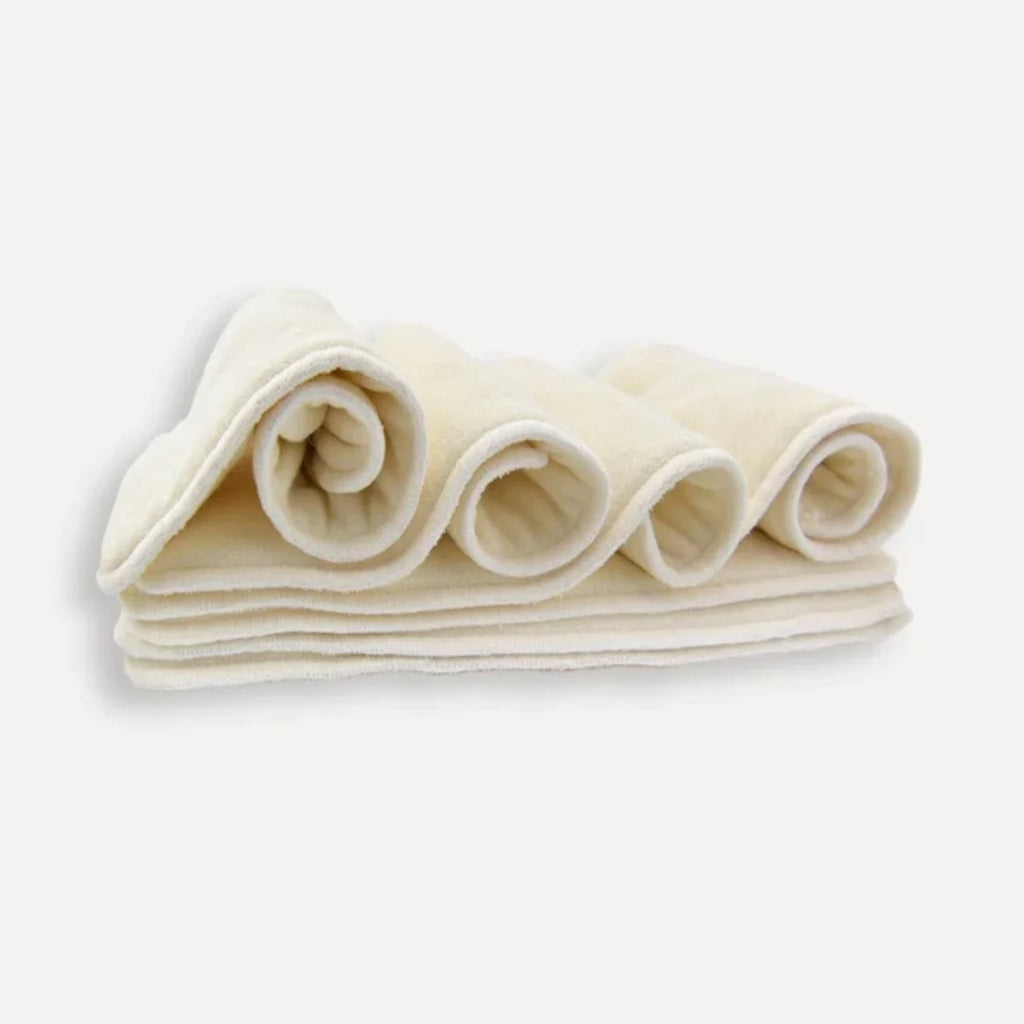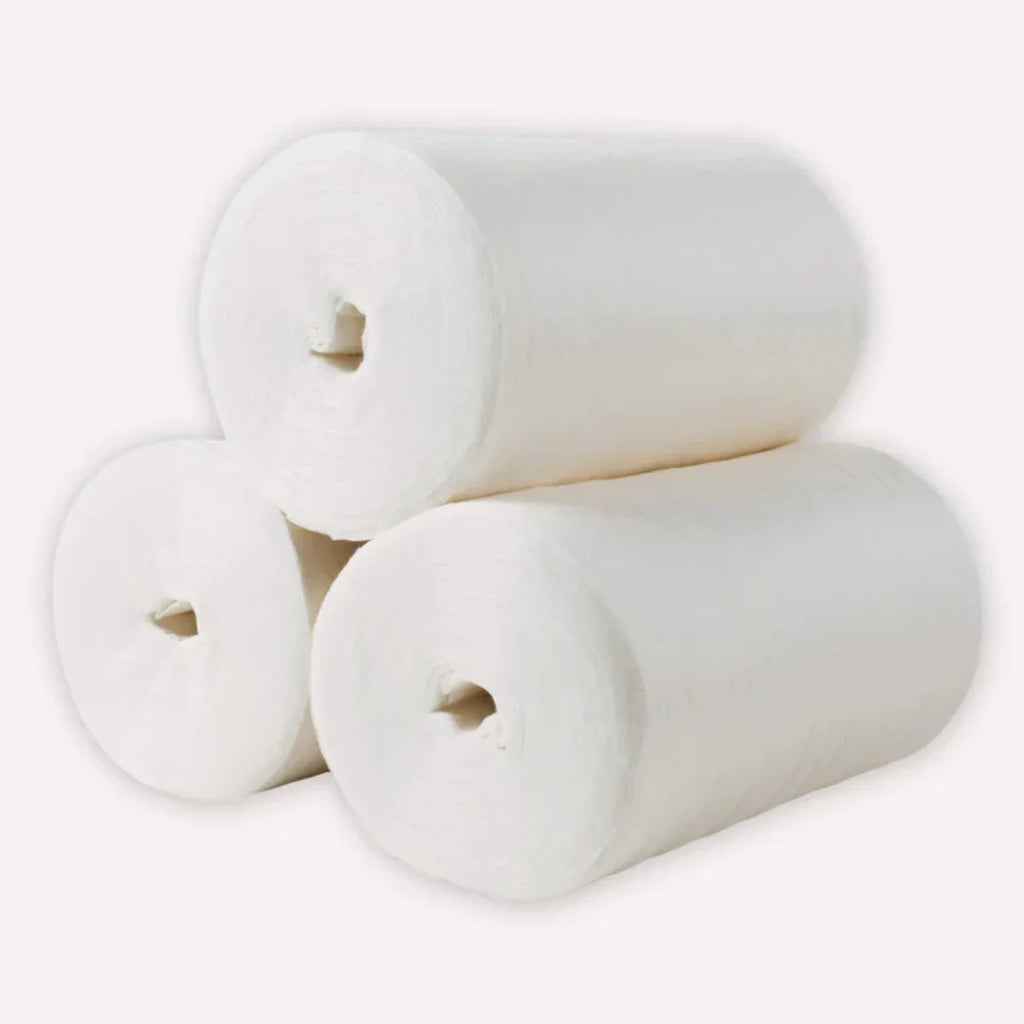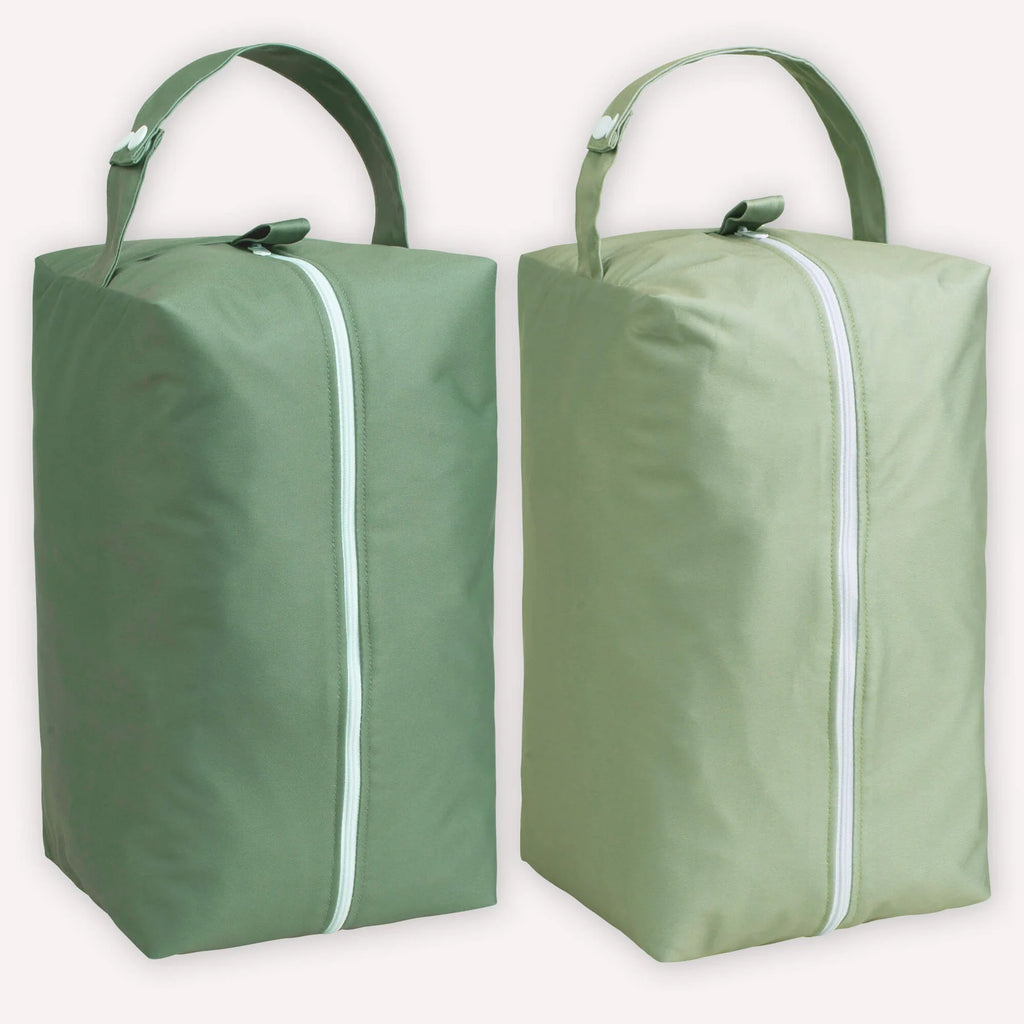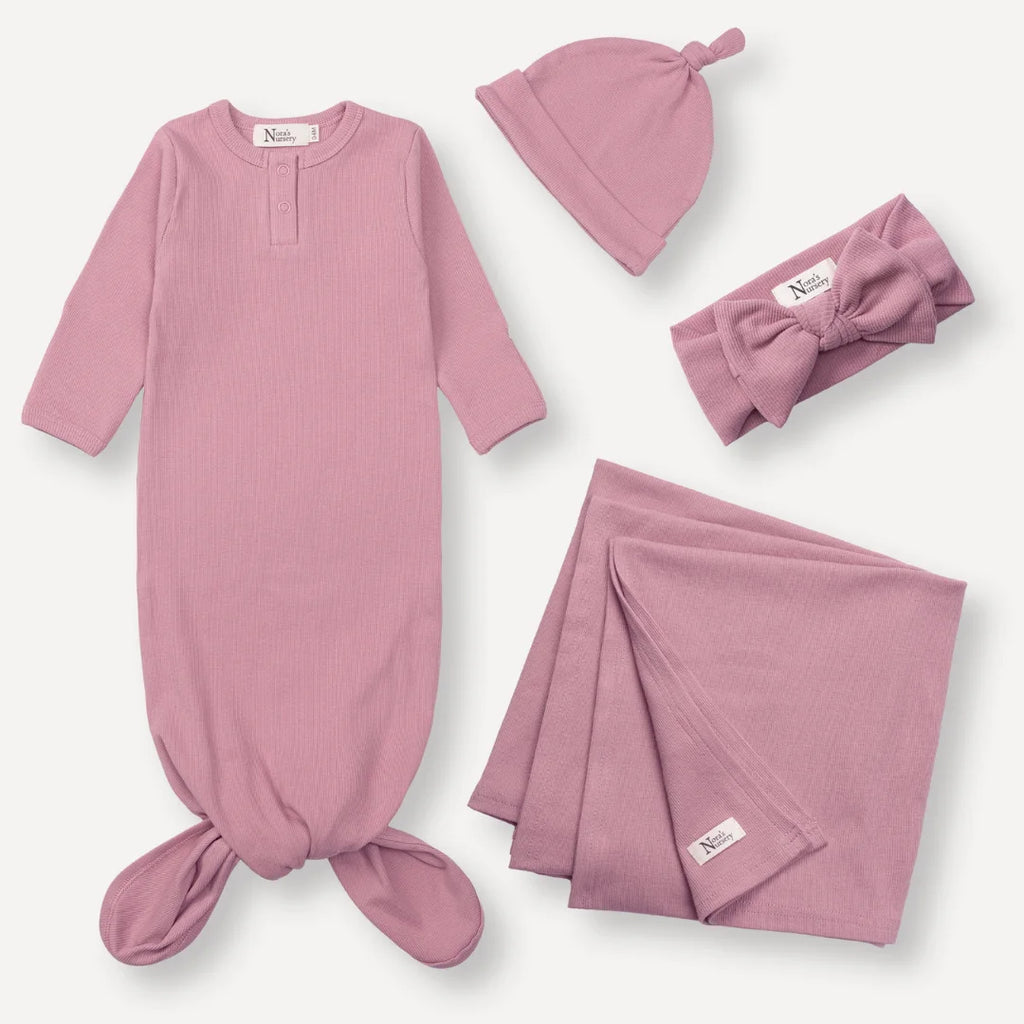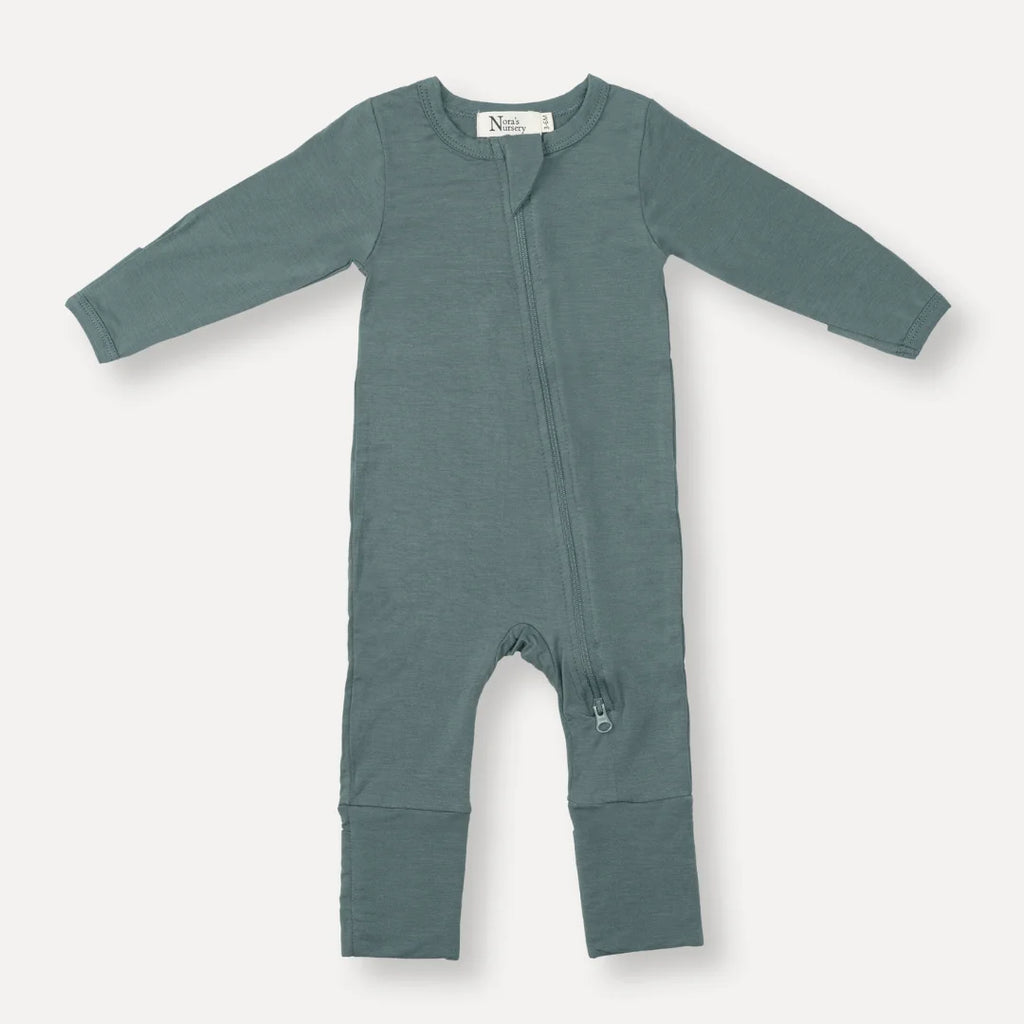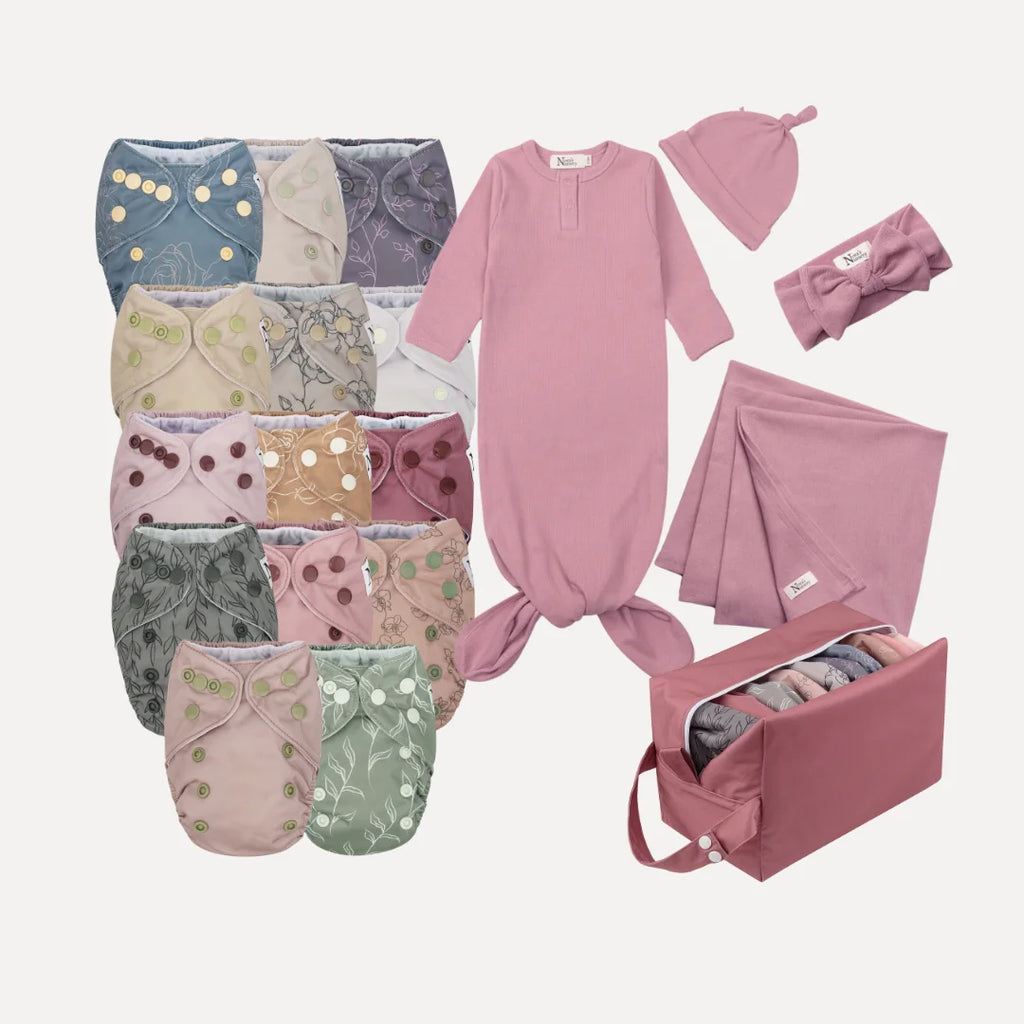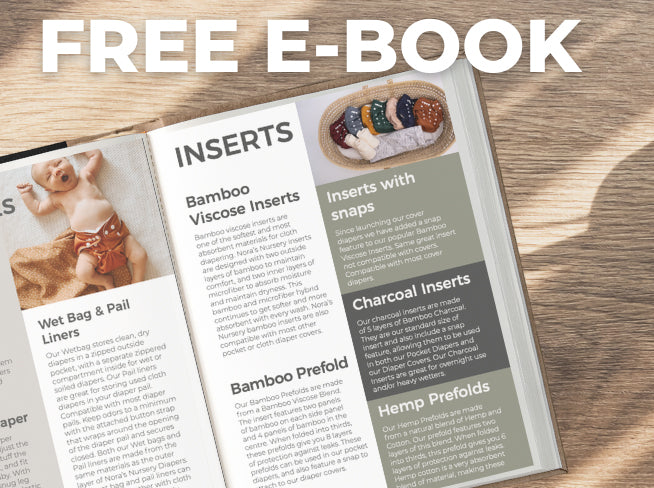As your little one grows older and diaper changes, and laundry becomes less frequent, you may notice your laundry hamper filling up less frequently as well. Because of this, another thing you may notice is mold, and/or mildew. The longer diapers sit between washes in a closed, warm, humid environment the greater chance of mold and mildew to develop. Not only creepy on the eyes, mold spores can be tricky to eliminate as they can cause stubborn stains.

Whether you're a seasoned parent or a soon-to-be one, navigating the delicate balance of maintaining cloth diapers, and keeping them free from these unwelcome intruders can be a challenge. In this blog, we will delve into the spots we see on cloth diapers, what they really might be. The root causes of mold, and mildew, and provide suggestions, and strategies for prevention, and effective removal methods! This blog will serve as a comprehensive guide on tackling the persistent nuisance of mold and mildew in cloth diapers.
First, can we be sure it’s mold? Not all dark stains = mold! Here are a few common mold imposters.
- Food Stains: Food that can get stuck to fabric creates stains that are very difficult to remove and may be mistaken for mold. First try soaking in hot water and OxiClean. If your little one has started on solids, then expect to see some colorful stains. For example – Bananas can leave black stains, spinach can leave green stains, blueberries can leave purple stains, etc.
- Lint: When washed with other items such as towels or fleecy fabrics, diapers can develop lint. First try lifting the fibers to see if lint is removed.
- Washing machine grease: Some washing machines may leave small black grease spots on your cloth diapers. Before bleaching first try removing the grease spots by scrubbing gently with dish soap.
- Diaper cream: Some petroleum based diaper creams can leave dark gray stains on synthetic fabrics that can look similar to mold. Try scrubbing the diaper with dish soak to remove the greasy residue. See our blog on Diaper Creams, and Cloth Diapers for our top cloth safe cream recommendations
- Mineral Deposits: Hard water can leave behind mineral deposits on cloth diapers, typically appearing as white or off-white spots. If you have hard water, or are seeing these types of spots, make sure you are incorporating a water softener into your routine. See our blog on Hard Water and Cloth Diapers for more information
- Ammonia Build-Up: If diapers aren't rinsed thoroughly or washed frequently enough, ammonia from urine can build up, leading to strong odors and yellowish discoloration.See our Washing 101 Blog for more on curating the perfect wash routine!
- Poop Stains: The consistency of Poop can vary through every stage of growth, which in turn causes different stains. Newborn Poop and Exclusively Breastfed poop can stain, and may leave bright yellow colored stains on your cloth diapers. While Toddler poop can leave more of a brown stain. See our Removing Stains blog on stains, and stain removal
Yup.. it’s mold. Before you panic, here are a few tried and true steps to help remove mold and mildew from your favorite fluff.
Step 1 - Bye-bye Mold: Bleach wash.
Although you've likely been advised to steer clear of bleach when caring for cloth diapers, there are specific instances where its use is not only recommended but necessary—such as when combating mold growth. Bleach serves as a potent weapon against mold spores, effectively halting their proliferation in its tracks. Incorporating a bleach wash into your diaper-cleaning routine is crucial for eradicating mold and ensuring the continued safety and hygiene of your cloth diapers. To perform a bleach wash, simply add bleach containing at least 5.25% sodium hypochlorite to your washing machine's bleach tray, alongside your regular detergent. Opt for a warm or hot water cycle to maximize the effectiveness of the bleach in killing mold spores.
Top Loader (Non-high efficiency):
- Small- 1/3 cup
- Medium – 1/2 cup
- Large/XL- 3/4 cup
Top loader (high efficiency):
- Small- 1/4 cup
- Medium- 1/3 cup
- Large- 1/2 cup
This proactive approach not only eliminates existing mold but also helps prevent its recurrence, protecting your baby's delicate skin and preserving the lifespan of your cloth diaper stash!
Step 2 – See ya, Stains: OxiClean paste
With step one complete, you’ve killed the mold, but you may still be left with a moldy reminder - stubborn stains. While these stains are purely aesthetic, maintaining the visual appeal of your cloth diapers is undoubtedly desirable. We want to keep our fluff looking cute, don’t we? If stains persist post-bleach wash, fret not—there's an effective solution at hand. Enter OxiClean paste, the next step in your stain-removal arsenal. OxiClean, renowned for its potent stain-fighting properties, comes to the rescue, ensuring those lingering marks are banished for good. Creating a paste with OxiClean and water, you can target and treat the stains directly, restoring your cloth diapers to their pristine condition.
- Safety first: wear gloves to protect your hands.
- Create a paste: mix a ratio of 2:1 OxiClean and water (2 tablespoons of OxiClean with 1 tablespoon of water).
- Stains be gone: Apply the paste to the affected area.
- Watch & Wait: Let sit for 1-3 hours.
- Squeaky Clean: Wash as usual.
*If the stain remains, repeat steps 1-5.
This proactive approach not only enhances the visual appeal of your cloth diapers but also reinforces their cleanliness and freshness giving them a nice reset!
Step 3 – Tough crowd: Concentrated bleach soak.
If mold stains persist even after the OxiClean treatment, it's time to escalate the battle against stubborn discolorations. As a final resort, you can perform a highly concentrated bleach soak to tackle the most resilient stains.
Begin by preparing a solution consisting of 1/2 cup of bleach per gallon of water, and soaking the affected items in 1/2 cup of bleach, and one gallon of water. Limit the soaking duration to a brief window of 5 to 10 minutes to prevent damage to the fabric fibers and minimize exposure to harsh chemicals.This is a very high bleach concentration and should only be used as a last resort, and approached with utmost care.
While effective in removing persistent mold stains, this method should only be done if necessary, and as a last resort. Remember to thoroughly rinse the cloth diapers after the bleach soak to eliminate any residual bleach and ensure the safety and comfort of your little one. With persistence and the right techniques, even the most stubborn mold stains can be vanquished, restoring your cloth diapers to their former glory!
Tips and Tricks to Keep Mold, and Mildew Away!
- Proper Storage: Ensure that cloth diapers are completely dry before storing them. Moisture is the primary factor contributing to mold and mildew growth.
- Good Air Circulation: Store cloth diapers in a well-ventilated area with good air circulation. Avoid keeping them in airtight containers or plastic bags. Check out our Waterproof Wet Bags, Diaper Pods, and Reusable Pail Liners for cloth diaper storage options!
- Sunlight: Sunlight is a natural mold and mildew inhibitor. Whenever possible, hang cloth diapers outside to dry in the sun. Sunlight not only helps to dry them thoroughly but also kills mold spores. Check out our Removing Stains in Cloth Diapers blog for more information
- Regular Washing: Establish a routine for washing cloth diapers promptly after use. Don't let soiled diapers sit for an extended period as this promotes mold growth. Learn more in our Washing 101 blog.
- Use Baking Soda: Add vinegar or baking soda to the wash cycle to help kill mold and neutralize odors. These natural ingredients are effective at combating mold and mildew. This shouldn’t be part of your regular wash routine, however, as baking soda, and vinegar can cause diapers to deteriorate and fail over time.
- Prevent Buildup: Avoid using too much detergent or fabric softener as they can leave residues that promote mold growth. Rinse diapers thoroughly to remove all soap residue.
- Dry Thoroughly: After washing, ensure cloth diapers are completely dry before storing them. Use a clothesline or dryer on a high heat setting to dry them thoroughly.
- Rotate Diapers: If you have a large stash of cloth diapers, rotate them regularly to prevent any single diaper from sitting unused for too long and becoming susceptible to mold growth.
- Inspect Regularly: Check cloth diapers regularly for any signs of mold or mildew. Address any issues promptly to prevent further spread.
- Consider Diaper Liners: Diaper liners can help to keep moisture away from the cloth diaper, reducing the risk of mold growth. Consider using our Disposable Bamboo Liners, especially for overnight or heavy wetting situations.
- Store Diapers Wisely: If you need to store cloth diapers for an extended period, make sure they are completely clean and dry before packing them away. Use breathable storage containers or bags to prevent moisture buildup. Checkout our Waterproof Wet Bags, and Diaper Pods, for storage options!
By following these tips, you can help prevent mold and mildew from forming on your cloth diapers, ensuring they stay clean and safe for your baby to use.
If you are looking for more information in relation to mold, and mildew, and keeping it away, here are some more blogs you may find helpful!
- Washing 101: Learn more on how to prep new diapers, and curate the best wash routine for you, and your little one!
- Best Detergents For Cloth Diapers: Choosing the best cloth diaper detergent that is safe for your baby and your cloth diapers while also providing an effective clean can be difficult with all the choices out there. In this blog we explain what to look for in a cloth safe detergent, and our top recommendations!
- Removing Stains in Cloth Diapers: Stains are part of cloth diapering, and over time, stains can begin to lift and wash away. Read this blog if you’re looking to find out the causes of stains, and get rid of them on your cloth diapers!
- Hard Water and Cloth Diapers: High mineral content in hard water can affect the performance of your laundry detergents, and your overall laundry routine as it leaves behind deposits that can buildup in your diapers. If left unchecked, this can wreak havoc on your cloth diapers. Check out this blog to understand more about how hard water can affect your diapers, and how you can tackle it head on!
In the journey of cloth diapering, the battle against mold and mildew is a common challenge encountered, however, with the knowledge and strategies outlined in this blog, you're well-equipped to tackle this issue head-on. As we have gone over how to identify common mold imposters, and implement proactive prevention measures and effective removal methods, we hope you've gained invaluable insights into safeguarding the cleanliness, hygiene, and aesthetic appeal of your cloth diapers.
By prioritizing diligence, patience, and the application of proven techniques, you can ensure that mold and mildew remain mere hiccups in your cloth diapering journey, allowing you to focus on what truly matters—providing comfort, care, and joy to your little one!


